TBS Operations Mark Milestones in Maryland and Alabama
Published: 17 July 2025
Data from these tethered balloon system flights now available to ARM users
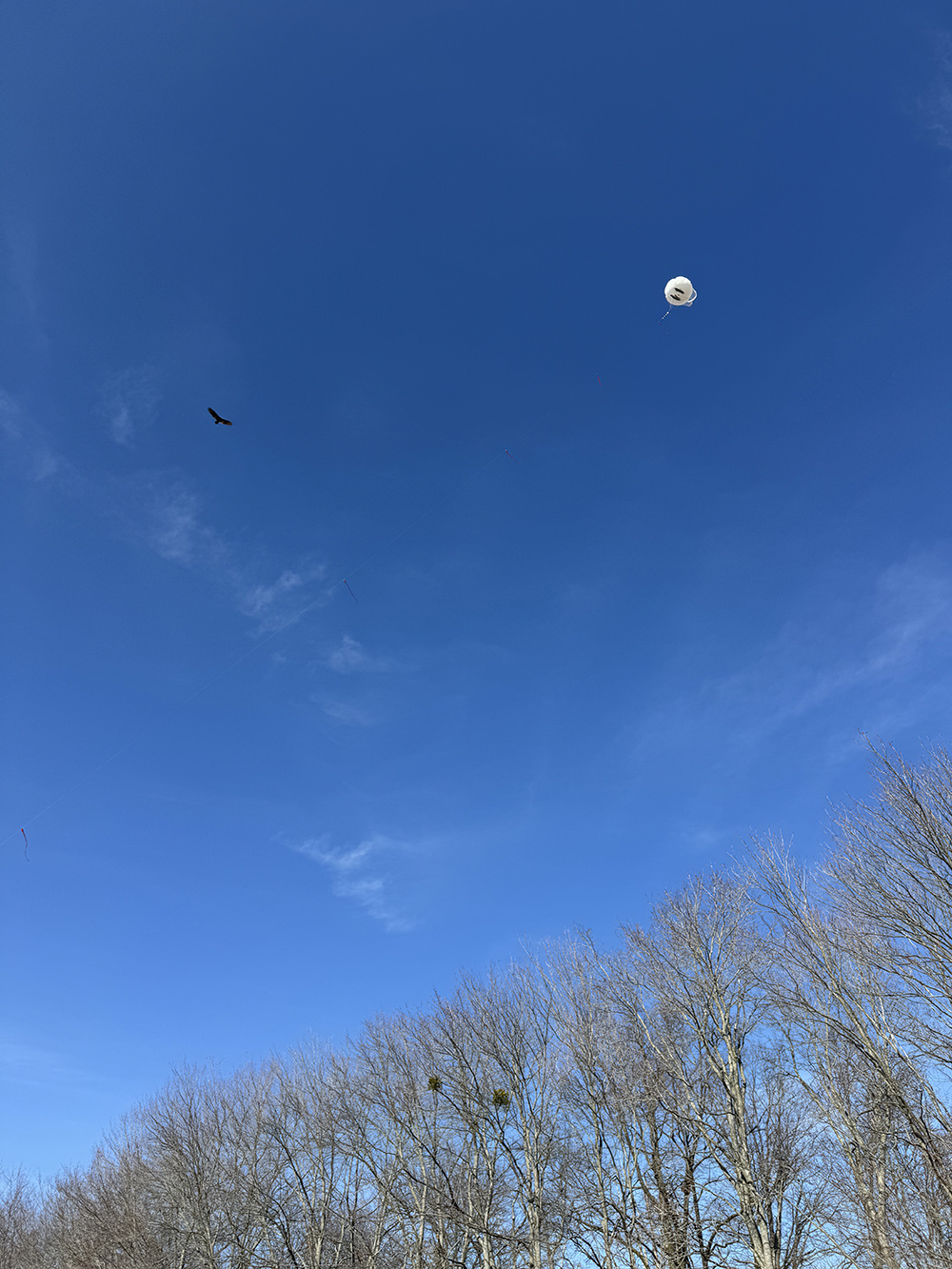
The team behind the Atmospheric Radiation Measurement (ARM) User Facility’s tethered balloon system (TBS) recently achieved significant milestones during its operations in Maryland and Alabama. Both locations presented unique challenges and marked strong successes for the TBS team.
“It has been a very busy time, but it’s been good,” says Dari Dexheimer, ARM’s lead TBS instrument mentor, who is based at Sandia National Laboratories in New Mexico. “We’ve accomplished a lot in a short time, flying at two new sites for the first time within a month of each other. The East Coast required a lot of additional coordination, making it a significant logistical achievement.”
“I want to recognize our team,” she adds. “They did whatever was needed to make our flights successful.”
Data from the Maryland and Alabama flights are available from the ARM Data Center.
Praise From FAA
In February 2025, the team launched operations at the Coast-Urban-Rural Atmospheric Gradient Experiment (CoURAGE) TBS site in the Baltimore area.
“Compared to other ARM locations, this site is in close proximity to densely populated areas,” says Dexheimer.
Operating in such a busy airspace required a lengthy approval process with the Federal Aviation Administration (FAA) and other agencies because of the heavy air traffic from Baltimore and Washington, D.C. The site’s proximity to the U.S. Army’s Aberdeen Proving Ground, where munitions are tested, added operational complexity.
“It is a challenging site for sure,” says Dexheimer. “FAA officials were very interested in our operation and equipment. But they were pleased with our use of the transponder, our coordination with air traffic control, the square-shaped flagging, and balloon lighting that makes it as visible as possible to other aircraft.”
Mud and Science
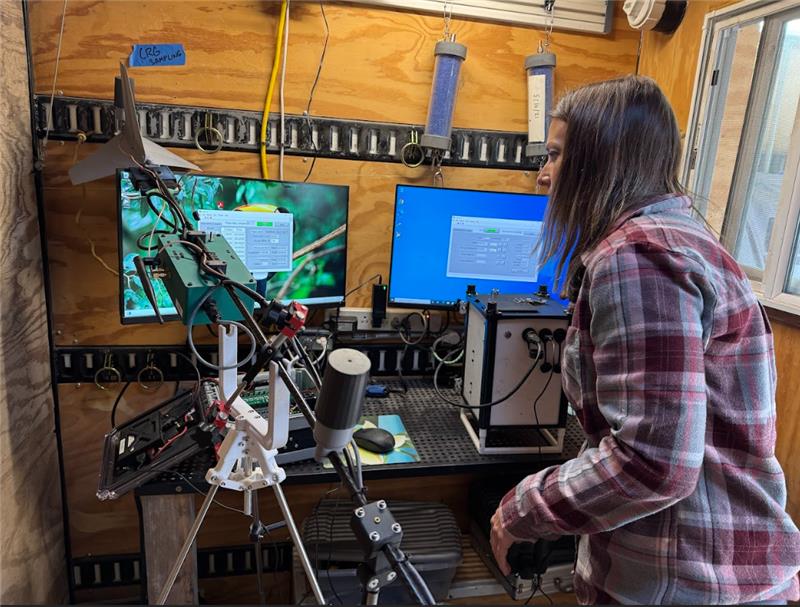
At the CoURAGE site, the team faced a continual freeze-thaw cycle, which resulted in deep mud.
This challenging terrain required traction mats, reducing the usable area. Nonetheless, the team had successful flights in support of the CoURAGE science missions.
Focusing on aerosols and volatile organic compound observations, instrument payloads included two miniaturized scanning electrical mobility sizers and a new ice-nucleating particle sampler, which was developed at Sandia in collaboration with ARM ice nucleation mentor Jessie Creamean of Colorado State University.
The flights also included instrumentation from the Environmental Molecular Sciences Laboratory (EMSL), which, like ARM, is a U.S. Department of Energy scientific user facility. The instrumentation is expected to be available in upcoming ARM-EMSL proposal calls as part of the Facilities Integrating Collaborations for User Science (FICUS) program.
Following the CoURAGE operations, the TBS team prepared for its next mission at ARM’s Bankhead National Forest (BNF) atmospheric observatory in Alabama. This involved significant pre-planning and logistics as equipment was shipped from Sandia in New Mexico and the CoURAGE TBS site to Alabama.
Milestones Achieved With Novel Sensor Deployments
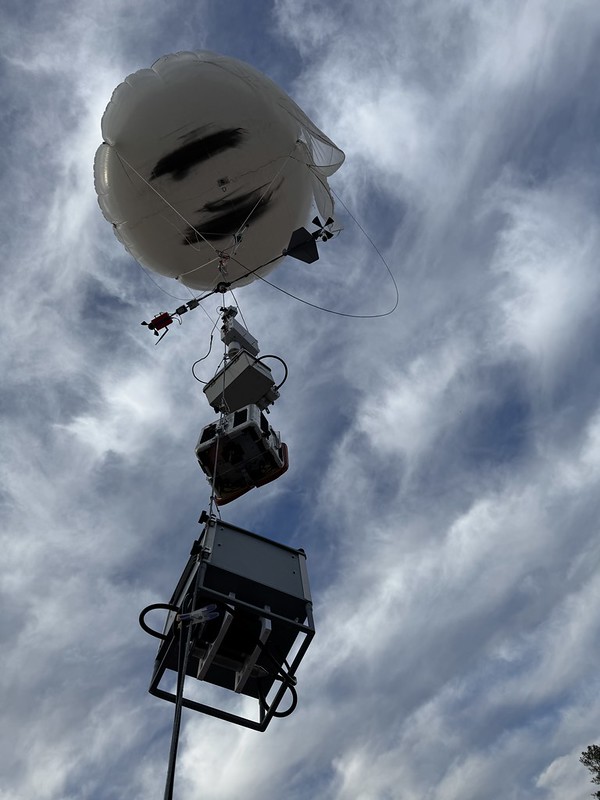
Once at the BNF, the ARM TBS team faced high winds and heavy precipitation. Still, it achieved a noteworthy milestone by flying the wideband integrated bioaerosol sensor for the first time. This instrument identifies biological aerosol particles, such as bacteria, fungi, and pollen, using fluorescence detection.
The deployment posed logistical challenges due to the sensor’s size and weight. The assembled device measured over 15.75 inches (40 centimeters) tall, 17.7 inches (45 centimeters) wide, and 14.6 inches (37 centimeters) long, with a weight of 47 pounds (21.3 kilograms), making it larger than typical TBS payloads.
The TBS team adapted to these complexities without modifying the balloon. Before the full launch of the TBS, team members learned how to safely attach the instrument to the balloon rigging and detach it while the balloon was lightly moving. They also undertook several troubleshooting efforts with the vendor to ensure that the instrument’s flow rate was consistent during flight and well documented.
The BNF also saw the debut of distributed temperature sensing (DTS) technology installed on the site’s 140-foot (42.7-meter) observation tower. The TBS team’s innovative approach measures temperature along a fiber optic cable, offering spatially continuous data on the vertical structure of the lower atmosphere, which can be used to help evaluate earth system models that inform energy infrastructure planning.
The experience and lessons learned from flying DTS on ARM balloon systems were applied to the tower installation, enabling a valuable new tool for ARM users.
Coordinated Flights With the ArcticShark
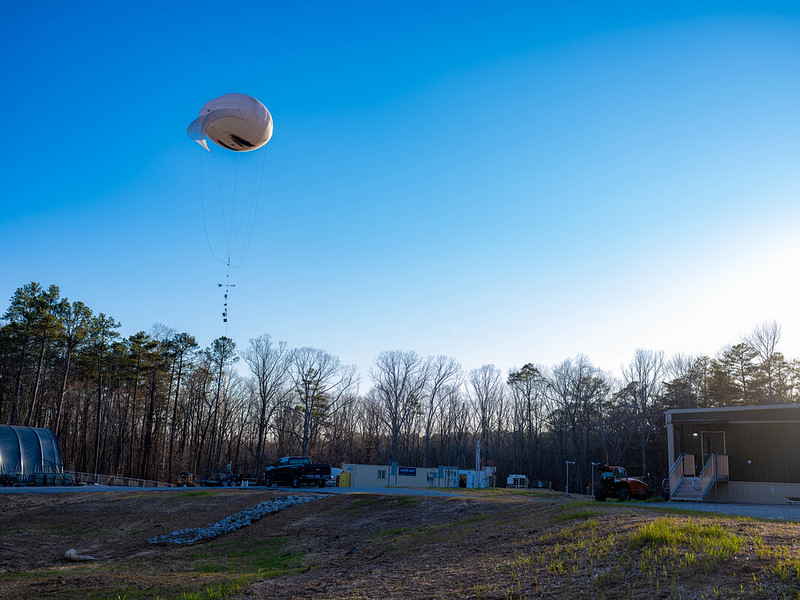
In Alabama, the TBS team completed the first set of coordinated flights with ARM’s ArcticShark uncrewed aerial system.
For two days, the ArcticShark flew a square pattern around the TBS (keeping a safe distance of 2 nautical miles, or 3.7 kilometers) at different altitudes while the TBS collected comprehensive vertical data. The coordinated flights obtained data on new particle formation events in the atmosphere—an important observational target for BNF researchers. The successful implementation of the coordinated flights during this pilot experiment opens new opportunities for researchers in future campaigns.
The TBS and ArcticShark returned to the skies above the BNF for approved user field campaigns in June, but they did not fly simultaneously.
June at BNF: New Instruments, FAA Impressed
In June, the TBS team supported two field campaigns at the BNF.
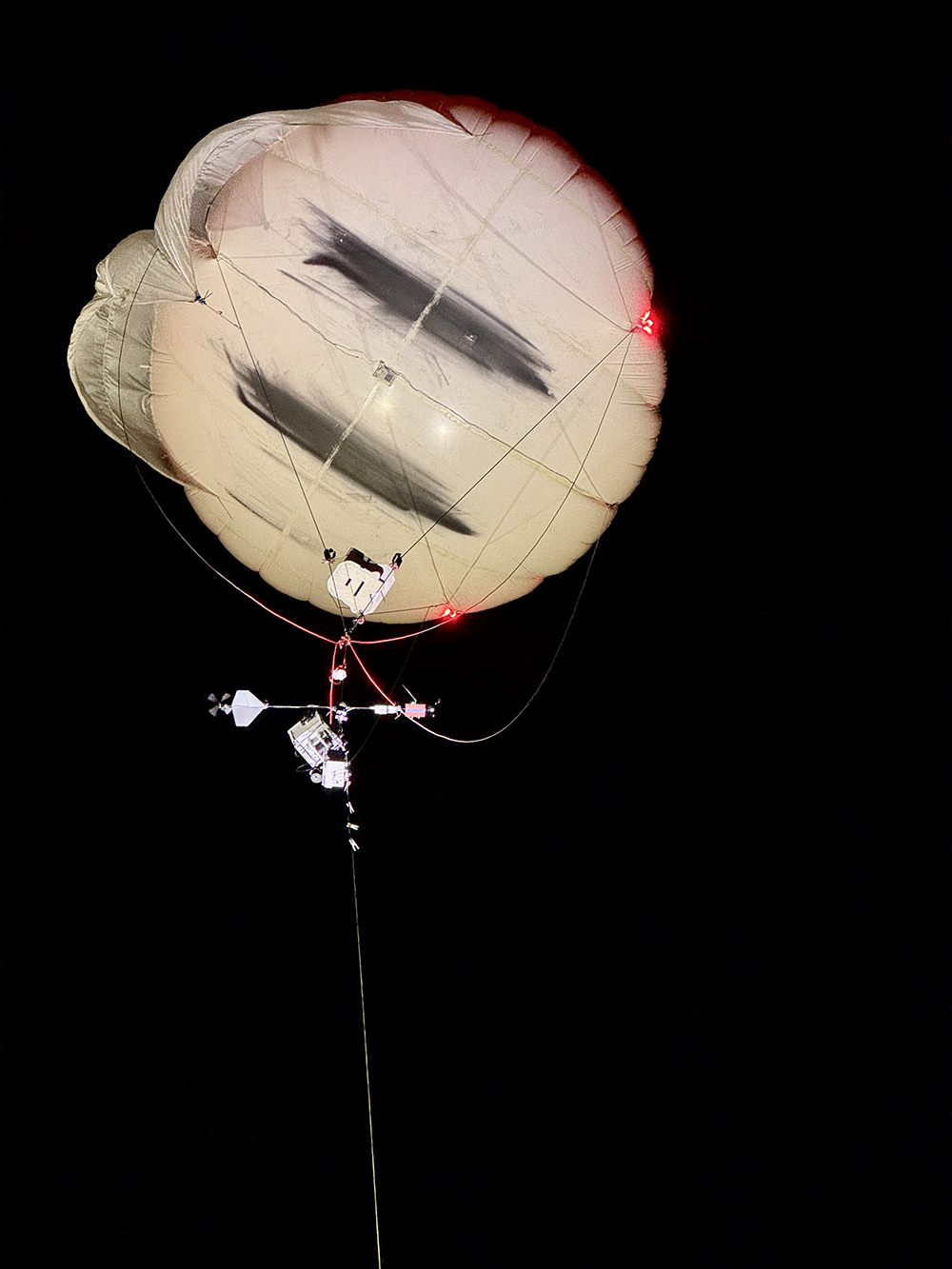
“We conducted a successful series of flights, amassing over 40 hours of flight time,” says Dexheimer, highlighting five guest instruments in the TBS sensor lineup: two versions of the wideband integrated bioaerosol sensor, an optical particle counter, a cloud droplet measurement system, and a video ice particle sampler. The TBS team also flew a guest miniaturized scanning electrical mobility sizer to obtain high-resolution measurements of particle size distribution.
The two campaigns—BIOaerosol Profiling with Open Path sensors (BIOPOP) and Field Observations of Real-time Emissions of Soil and Tree BIOaerosols (FOREST-BIO)—focused on quantifying the concentration and types of biological aerosols emitted from soils and trees into the atmosphere.
A highlight of the June operations was a visit by the FAA, which previously observed ARM TBS operations in the Baltimore area.
“This was a follow-up visit to observe nighttime flights and TBS lighting,” says Dexheimer, explaining that lighting and visibility are important safety considerations. “They (the FAA officials) were very pleased with our lighting. In fact, they were able to view our balloon from as far away as 6.2 miles (10 kilometers).”
Dexheimer expects that the FAA’s review—and documentation of ARM’s operations—will ease future approvals for night flights.
The TBS is scheduled to fly again at CoURAGE in July and the BNF in August.
Keep up with the Atmospheric Observer
Updates on ARM news, events, and opportunities delivered to your inbox
ARM User Profile
ARM welcomes users from all institutions and nations. A free ARM user account is needed to access ARM data.


















